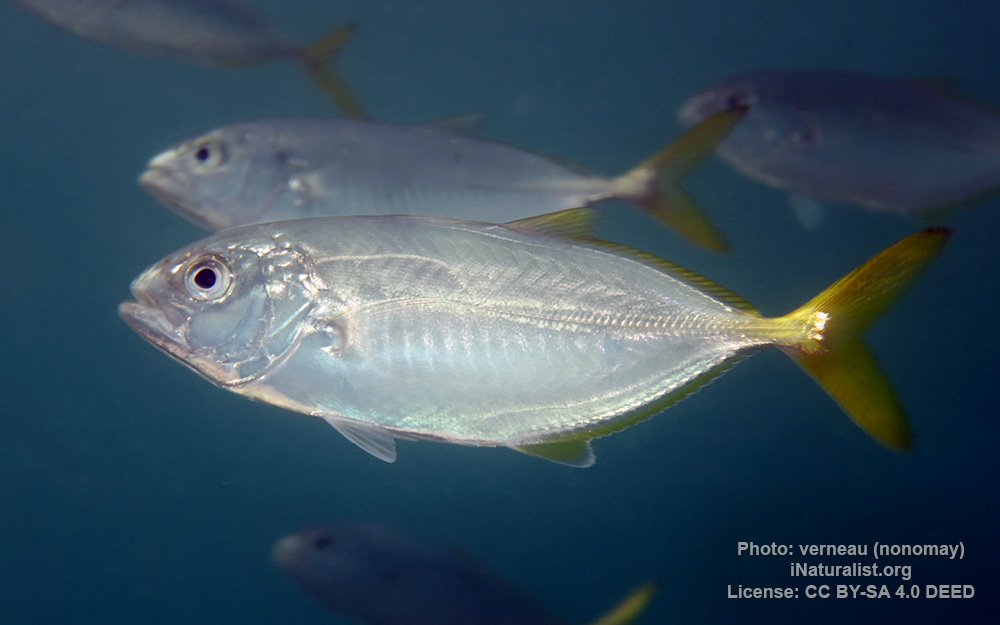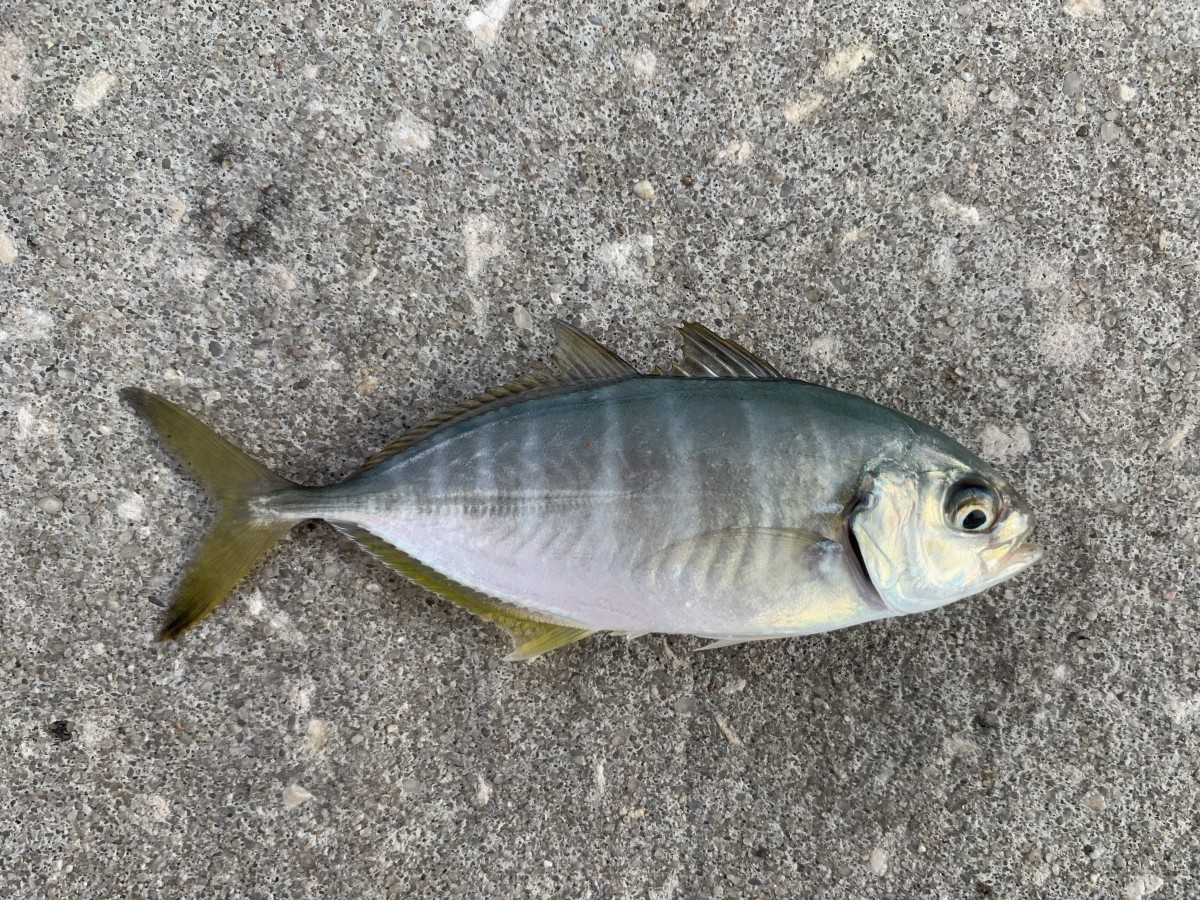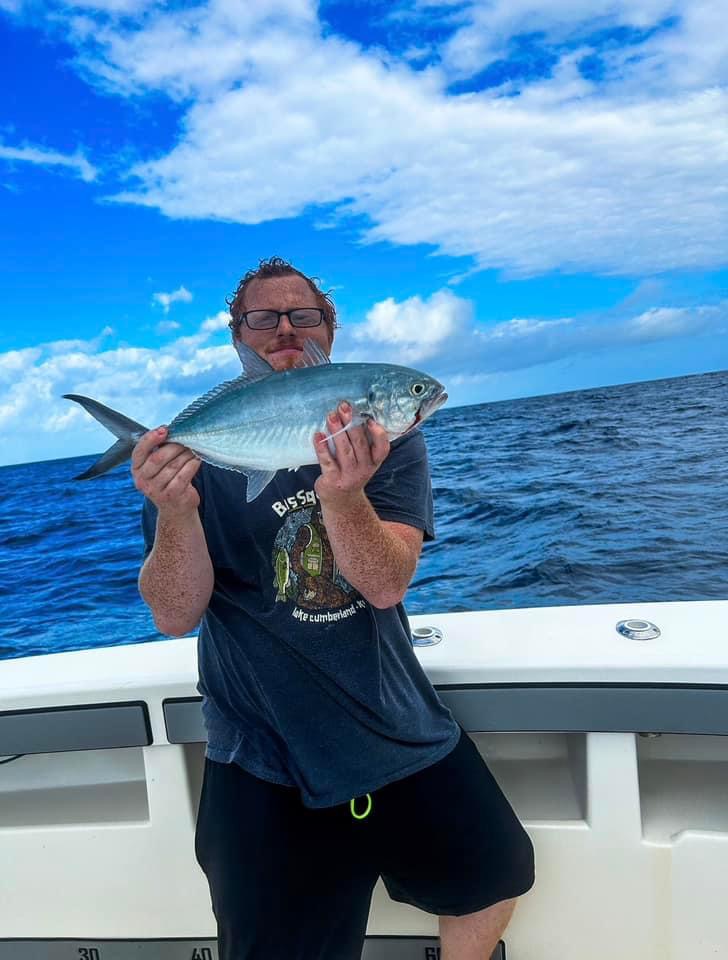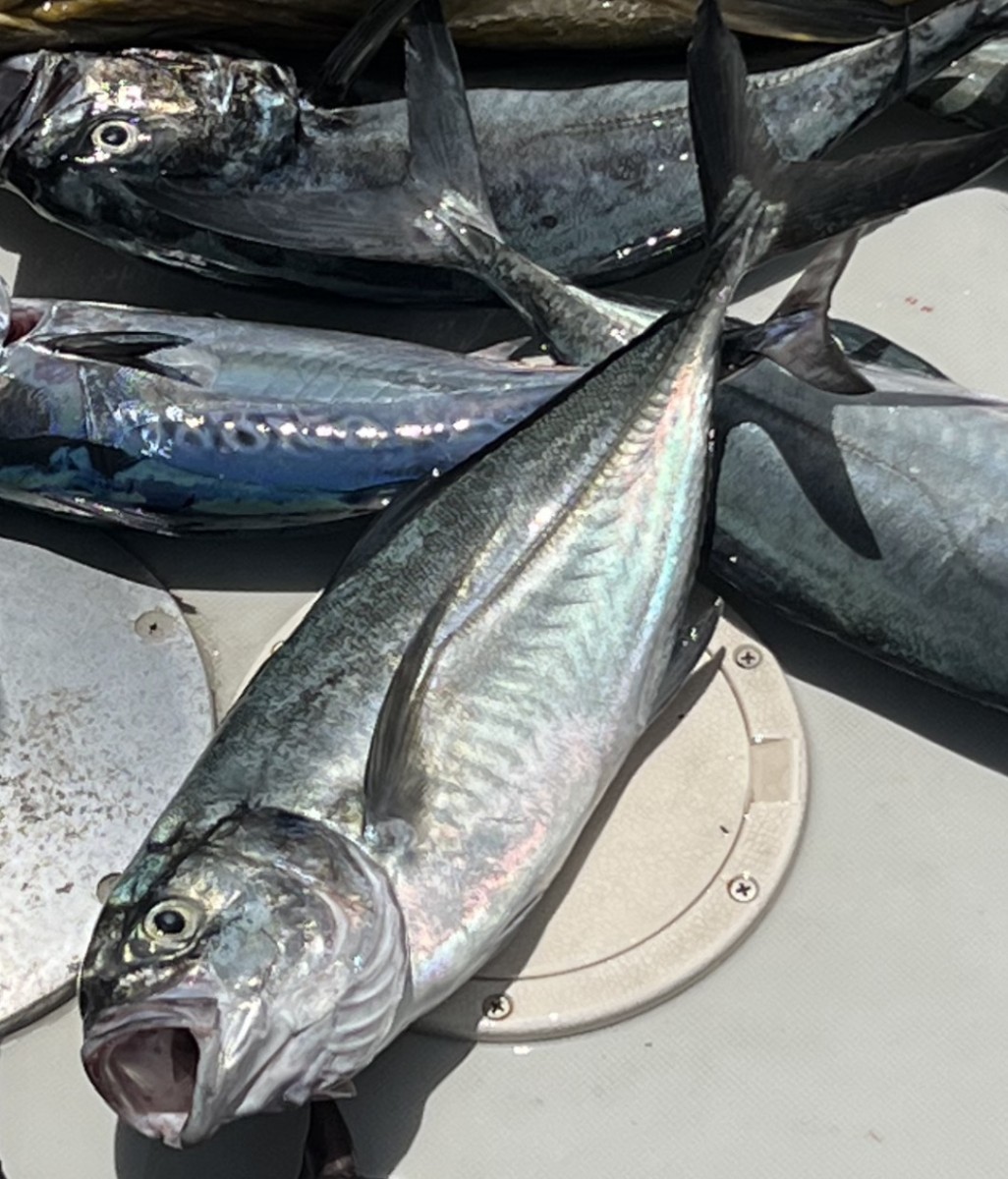Blue runner
(Caranx crysos)

Image source: verneau (nonomay) | inaturalist.org
Classification
General data
The blue runner (Caranx crysos), also known as the bluestripe jack, Egyptian scad, hardtail jack or hardnose, is a common species of moderately large marine fish classified in the jack family, Carangidae.
The blue runner is distributed across the Atlantic Ocean, ranging from Brazil to Canada in the western Atlantic and from Angola to Great Britain including the Mediterranean in the east Atlantic.
The blue runner is distinguished from similar species by several morphological features, including the extent of the upper jaw, gill raker count and lateral line scale counts.
The blue runner is known to reach a maximum length of 70 cm and 5 kg in weight, but is much more common below 35 cm.
The species inhabits both inshore and offshore environments, predominantly over reefs, however it is known to congregate around large, man-made, offshore structures such as oil platforms. Juveniles tend to inhabit shallower reef and lagoon waters, before moving to deeper waters as adults.
The blue runner is a schooling, predatory fish, predominantly taking fish in inshore environments, as well as various crustaceans and other invertebrates. Fish living offshore feed nearly exclusively on zooplankton. The species reaches sexual maturity at between 225 and 280 mm across its range, with spawning occurring offshore year round, although this peaks during the warmer months. Larvae and juveniles live pelagically, often under sargassum mats or jellyfish until they move inshore. The blue runner is of high importance to fisheries, with an annual catch of between 6000 and 7000 tonnes taken from the Americas in the last five years. The species is also a light tackle gamefish, taking baits, lures, and flies; but is often used as bait itself, being a mediocre table fish. There has been some suggestion that the eastern Pacific species Caranx caballus, the green jack, may be conspecific with C. crysos, although this currently remains unresolved.














